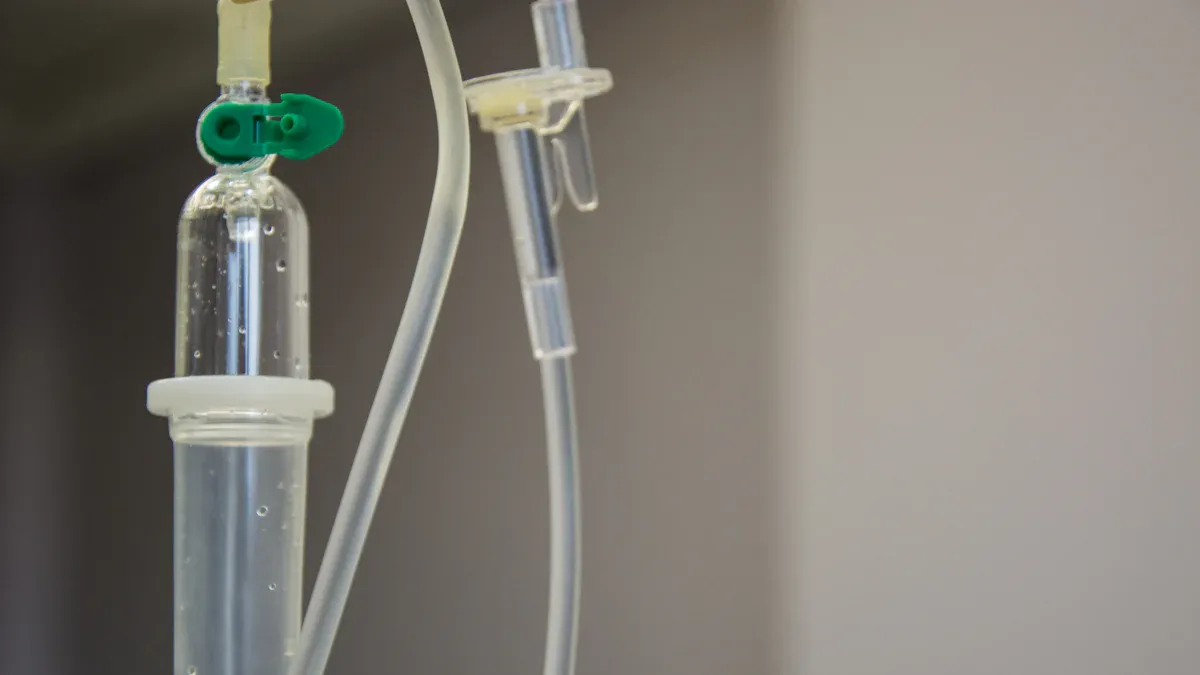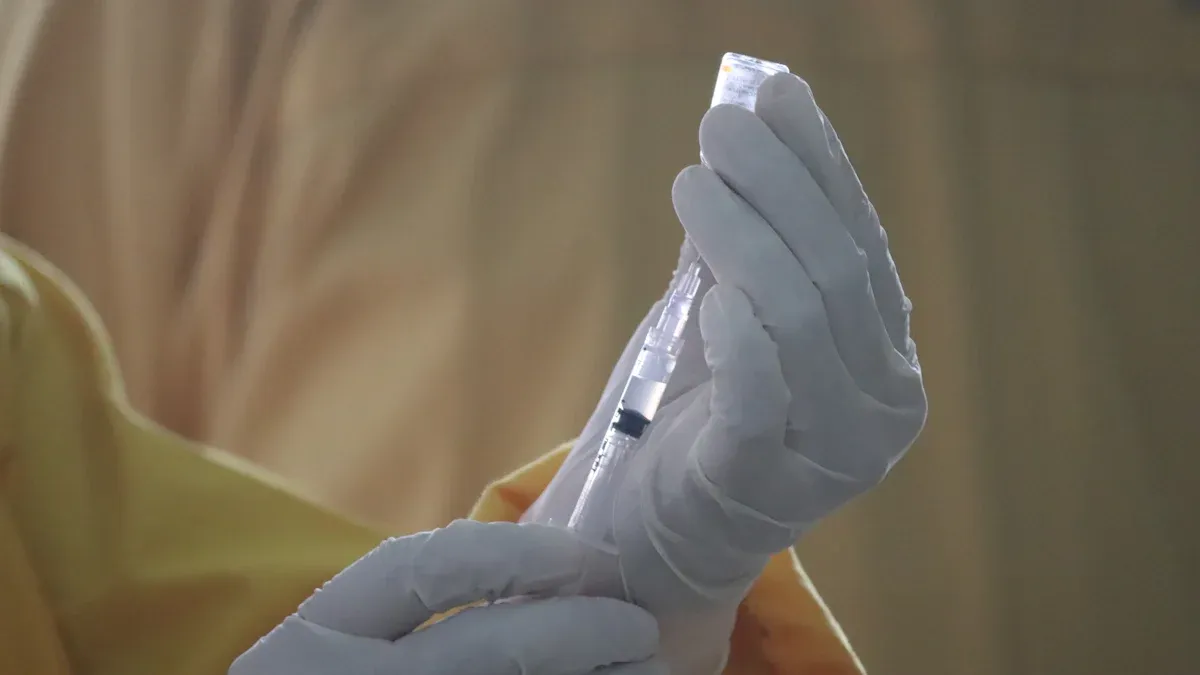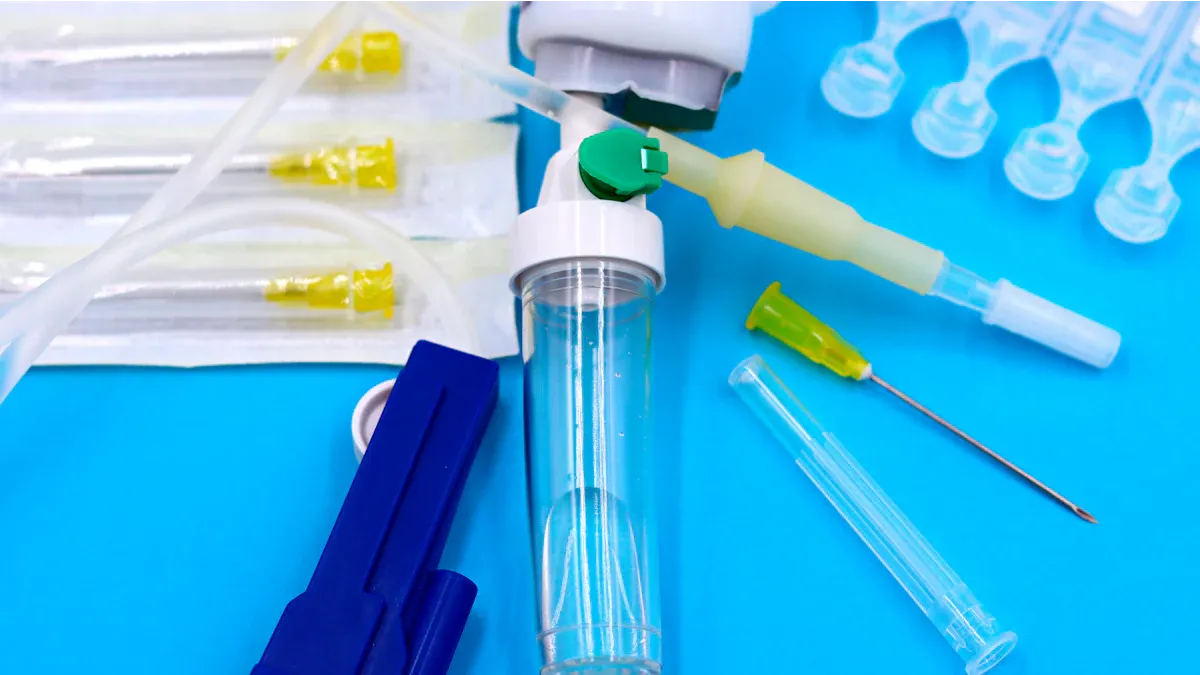What Sets Nitinol Tubing Apart in Catheter Shaft Engineering

Catheter shaft nitinol tubing has revolutionized the manufacturing of catheter shafts in the medical field. This unique alloy provides catheters and guidewires with exceptional flexibility, along with shape memory and superelasticity. These qualities enable medical devices to navigate the body’s complex vessels with ease, reducing the risk of complications. In practical medical applications, catheter shaft nitinol tubing outperforms other materials by delivering higher recanalization rates and fewer device-related issues.
Medical professionals agree that incorporating catheter shaft nitinol tubing into devices leads to improved patient outcomes. The table below presents clinical results from major studies:
Clinical Trial | Device Description | Recanalization Rate (%) | Symptomatic Intracranial Hemorrhage Rate (%) | Device-Related Complications Rate (%) |
|---|---|---|---|---|
MERCI | Flexible nitinol wire in helical loops | 46 | 8 | N/A |
Multi MERCI | Same device, IV rt-PA refractory patients | 57 | 10 | 4.5 |
Multi MERCI (confirmed) | Merci system alone or with extra therapies | 57.3 / 69.5 | 9.8 | 5.5 |
Key Takeaways
Nitinol tubing bends easily and remembers its shape. This helps catheters move through tricky blood vessels safely. It makes the process easier for doctors and patients. Its superelasticity lets it stretch and bend without breaking. It does not kink, so catheters stay open and strong. This lowers the chance of problems during surgery. Nitinol tubing is safe for the body and does not rust. It can stay inside the body for a long time. New ways to make nitinol tubing make it more exact and strong. This helps medical devices work better. Nitinol tubing works better than stainless steel and polymers. Patients heal faster and have fewer problems.
Nitinol Tubing Properties
Shape Memory
Nitinol tubing is special because it remembers its shape. If you bend or twist it, it goes back to how it was before. Doctors can make nitinol tubing into tricky shapes. When it goes inside the body, it changes with the body’s heat and returns to its shape. This makes it easy for catheters to move through tiny blood vessels and heart spaces. Shape memory means catheters do not need stiff parts. This helps keep tissues safe and makes it easier to move the catheter. Nitinol tubing helps doctors guide catheters safely in hard-to-reach places.
Superelasticity
Superelasticity lets nitinol tubing act like a spring. You can stretch, bend, or twist it, and it will go back to normal. This is very helpful for catheters used in heart and brain surgeries. The tubing can get small to fit in tight spots and then get bigger where needed. Nitinol tubing does not kink or crush as easily as stainless steel. It stays flexible and lets doctors control it well. These superelastic features help catheters move through twisty blood vessels without problems.
Biocompatibility
Biocompatibility means nitinol tubing is safe for the body. It does not hurt tissue or cause blood clots. Animal tests show nitinol tubing works well with blood vessels. Healthy tissue can grow over it, and bad reactions are rare. Its smooth surface and resistance to rust help it last a long time in the body. Medical-grade nitinol is a safe choice for catheters and guidewires. Safety and biocompatibility are very important, and nitinol tubing meets these needs.
Durability
Durability means nitinol tubing lasts a long time. It is strong, does not break easily, and can bend many times. The tubing keeps its shape and works well even after lots of use. It does not get damaged by body fluids because it resists rust and is safe for the body. Having the same wall thickness everywhere is important. This helps the tubing stay strong and flexible and not change shape under pressure. Nitinol tubing’s strength means catheters last longer and help patients more.
Tip: Having the same wall thickness, being safe for the body, and resisting rust are important for nitinol tubing in catheters. These things help catheters work well and keep patients safe for a long time.
Catheter Shaft Nitinol Tubing Performance

Flexibility
Flexibility is very important for nitinol tubing in medical tools. Catheter shaft nitinol tubing bends and moves easily inside blood vessels. Doctors need this so they can reach hard places during surgery. Nitinol tubing lets catheters follow the twists of arteries without hurting them.
The Vecta catheter shaft has a nitinol coil on the end, about 10.8 cm long, to make it more flexible and strong.
In lab tests, the Vecta 74 catheter moved like other big catheters in a glass blood vessel model.
When doctors used a microcatheter or stentriever wire, the Vecta 74 needed a little more force than most catheters, except the ACE 68.
Clinical results showed Vecta catheters could reach far targets, like the proximal M2 segment of the middle cerebral artery, showing they are flexible and easy to move.
Catheter designs often use a braided stainless steel coil for pushability and a nitinol coil for flexibility, which together make them work better.
Nitinol tubing’s flexibility comes from its special atomic structure. This helps medical devices move smoothly and safely inside the body. Catheter tubing made with nitinol can bend many times without breaking, which is good for doctors and patients.
Note: Flexible nitinol tubing means less chance of hurting blood vessels and helps doctors move catheters better during surgery.
Kink Resistance
Kink resistance is another big benefit of nitinol tubing. When doctors move catheters through tight or curved vessels, the tubing must not fold or kink. Nitinol tubing can bend up to 13% and still go back to its shape. This superelasticity keeps the catheter open and working, even in tough spots.
Nitinol tubing’s shape memory and superelasticity let it handle sharp turns without staying bent.
Stainless steel is strong but can kink more easily. Polymers are light but not as tough. Nitinol is both flexible and strong, making it best for kink resistance.
Nitinol tubing does not get tired easily, so it can bend millions of times without breaking. This is important for catheters and guidewires used over and over.
Electropolishing makes nitinol tubing smoother, which lowers friction and helps stop cracks.
Studies show nitinol guidewires lower problems by about 25% compared to stainless steel, showing better kink resistance and safety.
Doctors trust nitinol tubing because it keeps catheters working in hard situations. This means safer surgeries and better results for patients.
Torque Control
Torque control means doctors can twist and turn the catheter exactly how they want. Nitinol tubing gives catheters great torque control, which is important for reaching the right spot in the body.
Bench tests by Boston Scientific on the Direxion Microcatheter, which uses slotted nitinol hypotube technology, showed the catheter’s tip moved 11 times better than a regular catheter after one full turn. This high torque control helps doctors steer the catheter very well. These results are from bench tests, but they show how nitinol tubing can make devices work better.
Tip: Better torque control means doctors can move catheters exactly where they want, making surgery safer and more accurate.
The Role of Advanced Manufacturing
Modern ways of making things, like laser cutting and braiding, have changed how nitinol tubing works in medical tools. Laser cutting uses a strong light beam to make exact patterns in the tubing. This lets companies make tiny parts and lots of them with great accuracy. Braiding nitinol makes catheter shafts even more flexible and strong. These methods make catheter shaft nitinol tubing stronger, more flexible, and more precise. Because of this, medical devices work better in small surgeries, giving doctors more control and helping patients get better results.
Nitinol vs. Other Catheter Materials
Stainless Steel Comparison
Stainless steel has been used in catheters for a long time. It is strong and a little flexible. But it does not have the special features of nitinol tubing. Nitinol tubing is different because it can bend and twist a lot. It always goes back to its original shape. Stainless steel cannot do this. Doctors using stainless steel may see kinks or bends that do not go away. This can be a problem during hard procedures.
Nitinol tubing is also better at not breaking after many bends. It can bend millions of times and still work. This makes nitinol tubing good for long or repeated use. In hospitals, nitinol tubing helps catheters move easily through tricky blood vessels. This lowers the chance of problems. Patients have fewer device failures and better results. These reasons make nitinol tubing a top pick for surgeries that need small cuts and strong tools.
Polymers Comparison
Polymers like Pebax or polyurethane are light and bendy. They are often used in catheter shafts. But polymer shafts are not as strong or tough as nitinol tubing. To make them work better, companies add metal braids inside. Sometimes they use nitinol for this. Nitinol tubing is strong and flexible without needing extra help.
Nitinol tubing can be shaped in hard ways and keep that shape. This helps catheters move through tight or twisty blood vessels. Polymer shafts, even with braids, may not push or turn as well as nitinol tubing. In real use, nitinol tubing makes catheters work better. Doctors can reach the right spot and finish the job more easily.
Devices with nitinol tubing work better in surgeries with small cuts. Patients heal faster, feel less pain, and have fewer problems. Nitinol tubing lets doctors make smaller cuts and move tools more exactly. This is very important for today’s medical care.
Material | Flexibility | Durability | Clinical Outcome in Minimally Invasive Procedures |
|---|---|---|---|
Nitinol Tubing | Excellent | Excellent | High success, fewer complications |
Stainless Steel | Moderate | Good | More kinking, higher risk of failure |
Polymers | Good | Moderate | Needs reinforcement, less reliable alone |
Nitinol tubing is still the best for surgeries with small cuts. Its mix of flexibility, strength, and good results makes it the top choice for new catheters and guidewires.
Catheters and Guidewires: Patient Impact

Safety
Nitinol helps keep patients safer when they get catheters or guidewires. Its shape memory and superelasticity let devices move through blood vessels gently. This means less chance of hurting the vessel walls. Hospitals have seen 25% fewer problems in brain procedures with nitinol devices. Nitinol’s biocompatibility and corrosion resistance make infections and device failures less likely. Doctors see less swelling, fewer blood clots, and not as many vessel injuries. Strict rules like ISO 13485 help companies make better devices. These rules cut down on mistakes and recalls by 78%. This makes nitinol devices more dependable for patients.
Device | Sample Size | Technical Success Rate | Complication Rate | Occlusion Rate (Immediate / Follow-up) | Notes on Catheter Failure or Complications |
|---|---|---|---|---|---|
PulseRider | 34, 63, 54 aneurysms | 96.2% | 3 major in 54 cases | 82.4% immediate; 87.9% at 6 months | No catheter failure; low complications |
LVIS Jr | 30 patients | N/A | N/A | 89.6% immediate; 96% at 5.2 months | Smaller catheter, easier vessel access |
Cascade | 12 aneurysms | N/A | None reported | 75% complete occlusion | No catheter failure reported |
pCONus | 203 aneurysms | 100% | 0% technical; 7% morbidity; 0% mortality | 60% complete; 14% retreatment | No catheter failure; no hemorrhagic complications |

Comfort
Nitinol’s flexibility and biocompatibility help patients feel better during and after treatment. Catheters and guidewires made with nitinol tubing slide smoothly through blood vessels. This causes less pain and less damage to tissue. Hydrophilic coatings on nitinol tubing make it even smoother, cutting friction by up to 98%. Patients feel less discomfort when doctors use these catheters. Doctors also see less swelling and fewer problems after the procedure. Nitinol lets doctors do minimally invasive procedures. This means smaller cuts, less scarring, and faster healing for patients. These things help patients feel better and heal faster.
Nitinol tubing’s superelasticity and shape memory let catheters bend through tricky paths, so there is less tissue damage.
Biocompatibility means less swelling and a lower chance of the body rejecting the device, which helps people recover.
Minimally invasive procedures with nitinol mean less pain and quicker healing.
Hydrophilic coatings make it easier to place stents and implants, which helps with comfort.
Recovery
Patients heal faster after getting nitinol-based catheters and guidewires. Nitinol tubing’s flexibility and biocompatibility let devices move softly through blood vessels. This means less tissue gets hurt. Studies show people recover about 20% faster and have fewer problems with nitinol devices. Patients say they feel less pain and swelling. This means they can leave the hospital sooner and get back to normal life faster. The table below shows these benefits:
Metric | Nitinol Devices | Traditional Materials |
|---|---|---|
Recovery Improvement | Approximately 20% faster recovery times | Not available |
Pain Level Reduction | Noticeably lower pain levels post-surgery | Not available |
Risk of Complications | Reduced risk of complications and infections | Not available |
Nitinol’s special features help patients do better in heart and other medical treatments. Doctors see more successful procedures, fewer device problems, and better lives for patients. Catheter-delivered implants and stents made with nitinol help people heal faster and safer. This is why nitinol is the best choice for today’s less invasive surgeries.
Nitinol Tubing Innovations
Advanced Manufacturing
New ways to make nitinol tubing have changed medical devices. Companies use cold-working and heat to make tubing better. These steps help nitinol tubing stay strong during hard surgeries. Laser cutting and 3D printing make very exact shapes and sizes. These methods help create catheter shafts for many medical needs.
Vacuum melting, like Vacuum Arc Remelting, makes nitinol tubing pure and even. This process makes the tubing stronger and last longer. Surface treatments, such as electropolishing, make a smooth, nickel-free layer. This layer stops nickel from leaking out and keeps the tubing safe for the body. Real-time monitoring checks wall thickness to keep it within ±5 micrometers. This makes sure every nitinol tube meets strict rules for safety and performance.
Tip: Machine learning now helps factories pick the best steps. This means nitinol tubing is more reliable for medical use.
Future Trends
Researchers and companies keep finding new ways to use nitinol. The FDA changes its rules to keep nitinol tubing safe and useful. Scientists are working on thin-film nitinol for brain and cell therapy tools. Some new stents can open by themselves when they get warm in the body, which helps blood flow better.
Soon, smart nitinol devices may have sensors for real-time checks. 3D printing could make custom nitinol tubing for each patient. Drug-eluting stents and bioabsorbable nitinol devices are being made too. These new ideas could lower problems and help people heal faster. Nitinol tubing will likely be used more in brain, kidney, and other surgeries. The medical device industry thinks nitinol will help make safer and better tools.
Nitinol tubing is special in catheter shaft engineering because it has superelasticity, shape memory, and does not rust easily. These things help catheters bend well, not kink, and keep patients safe. Nitinol tubing follows tough ISO rules and works well for surgeries with small cuts. It lasts a long time and helps doctors do their jobs better. Experts think nitinol will be important for new medical tools, especially as MRI-guided and custom treatments become more common. New ways to make and design nitinol tubing will keep helping patients and improve results.
Nitinol tubing helps make surgeries safer, better, and more comfortable.
Nitinol tubing will keep getting better as doctors use more new ideas in medicine.
FAQ
What makes nitinol tubing different from stainless steel in catheters?
Nitinol tubing can bend and then go back to its shape. Stainless steel can bend but might stay bent or kink. Nitinol tubing lasts longer and moves more easily in blood vessels. Doctors pick nitinol because it makes catheters safer and more flexible.
Is nitinol tubing safe for the human body?
Yes, nitinol tubing is safe for people. It does not hurt tissue or cause bad side effects. Medical experts use nitinol in many devices because it does not rust and works well in the body.
How does nitinol tubing help patients recover faster?
Nitinol tubing lets catheters move softly through blood vessels. This means less pain and less swelling for patients. People usually heal about 20% faster and can leave the hospital sooner.
Tip: Nitinol’s smooth surface and bendy nature help lower tissue damage during procedures.
Can nitinol tubing be used in all types of catheters?
Doctors use nitinol tubing in many kinds of catheters and guidewires. It works well for heart, brain, and blood vessel surgeries. Its bendiness and strength make it a top pick for many medical tools.
See Also
The Importance Of Nitinol Tubing In Modern Medicine
The Process Behind Producing Nitinol Tubing For Healthcare
Ways Nitinol Tubing Is Transforming Medical Device Technology

